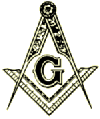|
If You Enjoy Music
"THE ZENO NARRATIVE."
The Zeno Map
SIX HUNDRED YEAR ANNIVERSARY (1398)
SCOTS IN AMERICA - NINETY FOUR YEARS BEFORE COLUMBUS.
In 1398 Prince Henry Sinclair, his Venetian navigators Antonio and Nicola Zeno, and "three hundred Knights Templar," left Orkney in twelve ships.
They sailed to the Faroe Islands, Iceland and Greenland then on to Nova Scotia and New England.
This is the story of the "Zeno Narrative," a document that records and maps the travels and explorations of Prince Henry Sinclair with his companions to the New World, ninety four years before Christopher Columbus made his epic voyage.
Prince Henry Sinclair was born in 1345, at Rosslyn Castle, and was the descendant of the Saint Clair / Gisors a Norman family that was granted the Barony of Rosslyn, Midlothian, Scotland in the 12th century.
Prince Henry in 1379 also gained the Earldom of Orkney. This Earldom included Shetland, the Faroe islands and possibly Iceland. Altogether some two hundred islands in the North Atlantic.
During the period of rapid decline of the Knights Templars' influence in Europe, many Templars travelled to Scotland where they received protection from the "Suppression
Order," that had been issued by the French king Philip "le Bel," and supported by Pope Clement V.
The "Suppression Order," resulted in the Knights Templar either organising new orders e.g. the "Hospitaliers," and the Knights of Santiago," or to seek refuge in other lands.
Protection was granted in Scotland as Robert the Bruce refused to obey the Suppression Order," for he had earlier been excommunicated by the church for the murder of John "the Red," Comyn. The Sinclair family had been Templars since 1118 and while Bruce was the Sovereign Grand Master of all Crafts and Guilds, Sir William Sinclair (Henry's father) was the Hereditary Grand Master.
Sir William perished in Spain while attempting to transport Bruce's heart to the Holy Land.
Prince Henry joined the "King Peter," crusade of 1365 and while in Venice he met the famous Zeno family. The Venetians were the victors in this campaign, however, the ports of the region were closed to them by their enemies. This could have been the reason that Antonio and Nicola joined Prince Henry. The citizens of Venice were traders, and with their ports blocked, new trade routes were eagerly sought. In 1391, Nicola sailed to Orkney, and shortly thereafter, sent word for his brother Antonio to join him.
At the age of fifty-three, Prince Henry sailed west from Orkney to Iceland, but while there was unable to take on provisions. The "Zeno Narrative," explains,
Prince Henry and his companions befriended the peoples of the local Micmac nation and, for at least a year, explored much of the north- east coast of North America. There is evidence of this in a stone- carved effigy of a Sir James Gunn that has been dated by archaeologists as the late 14th century. This carving is located at Westford, Massachusetts.
Soon after Prince Henry returned to Orkney he was assassinated (1404). This was carried out by members of the Hanseanic League of Northern Germany, rivals for the trading areas. The travels and accomplishments were therefore temporarily concealed as Prince Henry's son (also named Henry) was arrested and held captive in England. However, Henry's daughter, Elizabeth, recounted the tale to her son John, who in turn told his in-laws. One of these in-laws was the wife of Christopher Columbus. It was not until 1558 before the "Zeno Narrative," was finally published.
The "Zeno Narrative," also included the "Zeno Map," of the North Atlantic. The eastern part of the map shows the outlines of Sweden, Norway and Denmark. Greenland (called Engronelant) is shown with permanent mountain ranges. Iceland (called Islanda) is shown between Norway and Greenland. The northern tip of Scotland is shown on the bottom right-hand corner. The diamond shaped area in the middle is thought to be floating pumice from a volcanic eruption on Iceland. At the bottom left-hand corner is the area thought to be Nova Scotia.
Several islands are also shown, they include Estland, Podalida, Estotialand, Icaria and the most famous Frisland. Why any of these islands were mistakenly drawn remains a mystery. The :Zeno Map," was first published in the first edition of Girolamo Ruscelli's "Geographia," in Venice in 1561.
Compliments of "THREE PILLARS MAPS.".

CLICK HERE FOR FIRST PAGE
|
The Pine Island Webwright


